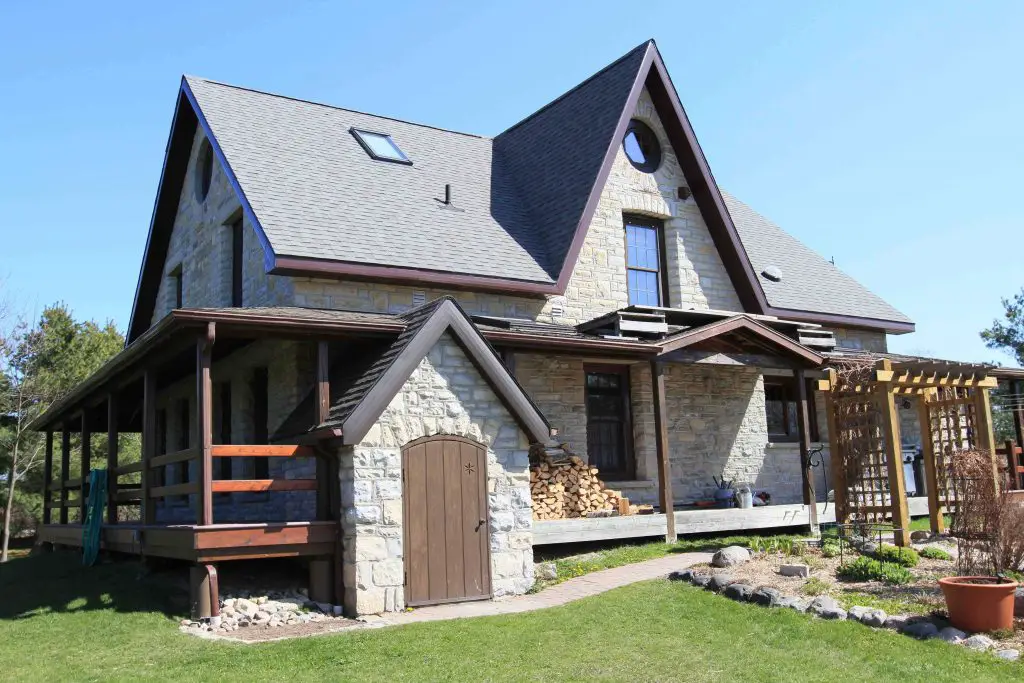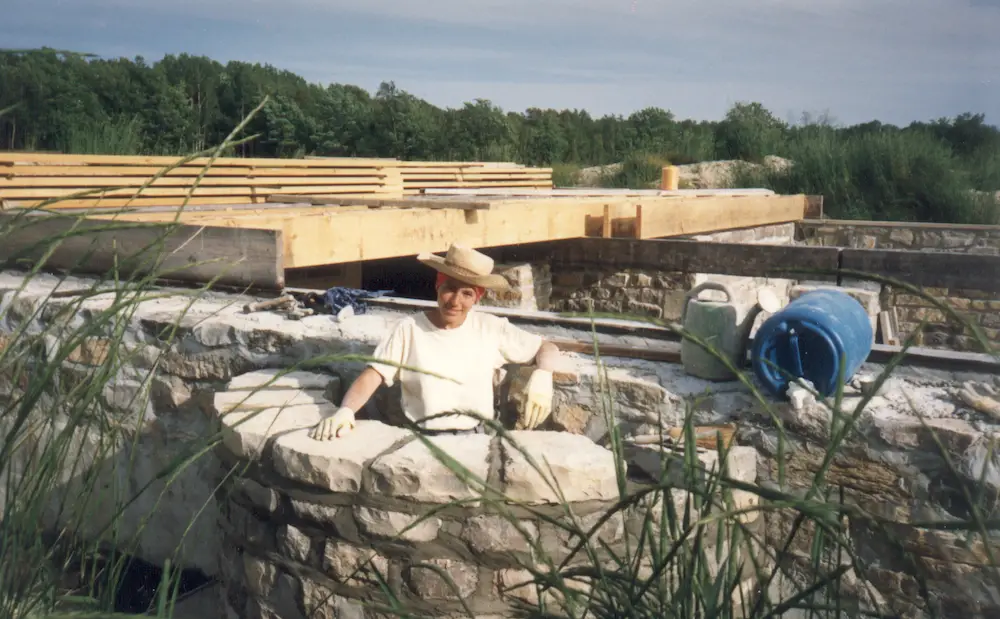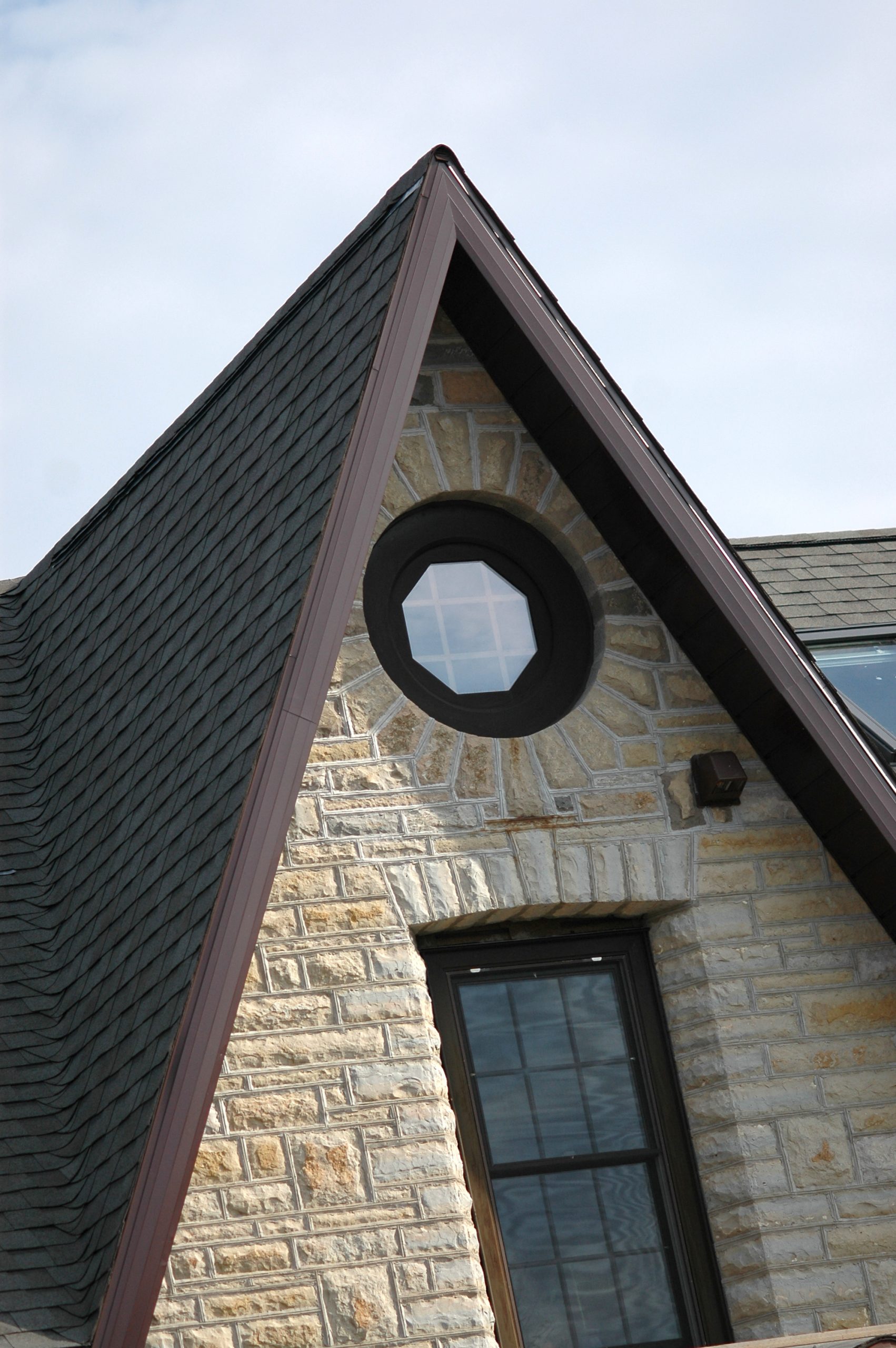On July 1, 1987 I began building in a way I’d never seen anyone else do in real life. Without anyone available to teach me the details, the learning curve involved four years of struggle before the break-through stage when there was more joy than frustration. This was the beginning of my experience with traditional, structural stonework, and the adventure has left me with something that’s proven valuable far beyond just the work with stone itself. Perhaps you’ll find something valuable for yourself in my experiences, too. You can see the house I built that taught me lessons from stone below.

By traditional stonework, I mean taking raw stone as it exists in the many rocky places of the world and using it to build load bearing walls, arches and corners in the old fashioned way. This is the kind of approach used to build barn foundations, castles and churches centuries ago, and it’s rare enough that few people do it any more. Even the tools are hard to find. I know of only two places in the world to get the chisels and hammers I need for building with stone in this way.
Lesson from Stone#1: Possible Things Sometimes Seem Impossible
The first thing my wrestling match with stonework taught me is that seemingly impossible things can actually become easy in time. Not just possible, but easy. I’ve been involved in many trades over my life, but stonework is the only one that seriously tempted me to think it was impossible. The only thing that prevented me from giving up completely at the beginning was the undeniable proof that stone buildings provided. They exist. I can see them. Therefore it must be possible to build them. When I spend a day building with stone these days, while it’s physically tiring there’s no frustration and no questioning what to do. The almost-impossible is now easy, and I remember this whenever I run into new struggles in other areas of life that seem impossible to me now. You can see my wife, Mary, in the basement we built together. She’s standing in what is now the window well on the north side of our place.

Lesson from Stone#2: Real Beauty is Almost Always Impractical
The second thing stonework taught me is that beauty matters, and more often than not, the price you have to pay for beauty involves impracticality – sometimes an enormous amount of impracticality. Take the example of light and shadow. Visually speaking, this is where the beauty of hand-worked stone comes from. Sunlight hits the irregular surfaces of a stone wall at different angles during the day, creating shadows and textures on the facets left behind by the chisel. Is the work of building with stone way too high a price to pay for something like a nice looking wall? Yes, it is too high to pay for every situation, but that doesn’t mean we can completely reject impracticality and not lose something valuable. Just look at the destinations around the world that attract people because of the beauty of the buildings there. Venice, Quebec City, Mackinac Island, Victoria, Prague and many others all attract visitors precisely because they have the kind of beauty that only comes from building in a way that we now consider highly impractical. What else would you call building a city on the marshy swampland where a river meets the ocean (Venice), or outlawing the use of motorized vehicles in favour of horse-drawn buggies, bicycles and foot traffic (Mackinac Island)? One of the reasons Quebec City attracts people from all over the world is because it has the kind of buildings that happen when skilled hands get to work on the raw stone of the earth.

Lesson from Stone#3: Durability Matters Because Time Goes Quickly
The third thing that stonework has taught me is that durability matters. When you’re a kid, a decade seems like eternity. In your 20s, time begins to speed up. By the time we’re past 50, you realize that a century isn’t all that long. The nice thing about stonework is that it really can last for centuries with no maintenance when it’s done right. I was thinking of this fact as I was cutting stone for a round arch a while back. Click below for a detailed video tour of one part of how I do my stonework.